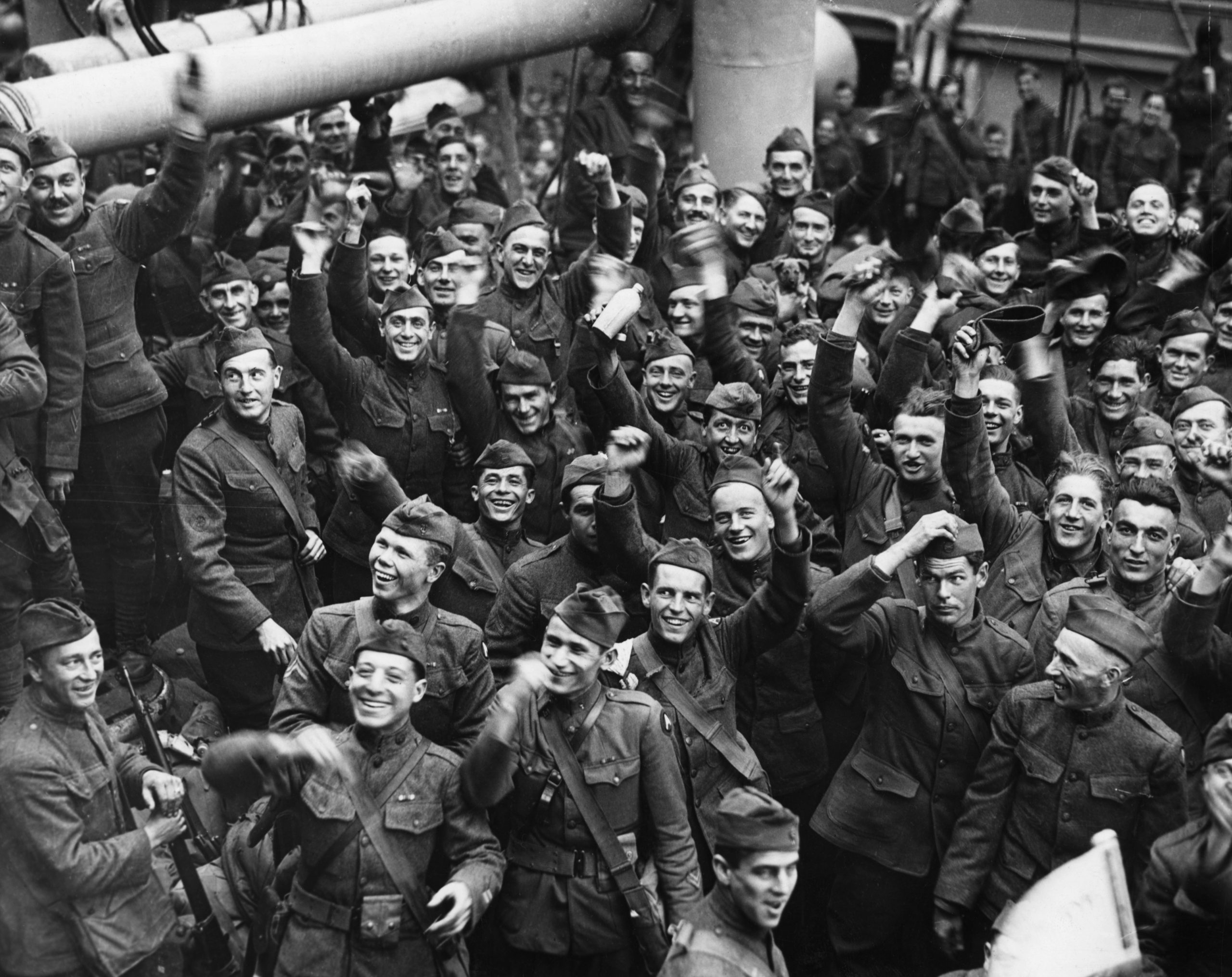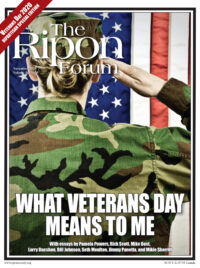
At the eleventh hour on the eleventh day of the eleventh month of 1918, armed conflict ceased as an armistice between Germany and the Allied nations went into effect. Despite the “The Great War” not officially ending until the Treaty of Versailles was signed in France on June 28th, 1919, November 11th stands in history as the moment peace began after close to 10 million soldiers gave their lives and 21 million soldiers were wounded worldwide.
In November of that same year President Woodrow Wilson declared November 11th the first annual commemoration of Armistice Day, sharing this sentiment:
“To us in America, the reflections of Armistice Day will be filled with solemn pride in the heroism of those who died in the country’s service and with gratitude for the victory, both because of the thing from which it has freed us and because of the opportunity it gives America to show her sympathy with peace and justice in the councils of the nations.”
President Wilson intended to acknowledge the moment of the cease fire with national suspension of all businesses for a two-minute period beginning at 11 A.M. on November 11th followed by nationwide parades and celebrations.
Congress adopted a resolution seven years later requiring the President to issue a proclamation for a national observance of Armistice Day on its anniversary, with President Calvin Coolidge decreeing that,
“Whereas the 11th of November 1918, marked the cessation of the most destructive, sanguinary, and far reaching war in human annals and the resumption by the people of the United States of peaceful relations with other nations, which we hope may never again be severed… it is fitting that the recurring anniversary of this date should be commemorated with thanksgiving and prayer and exercises designed to perpetuate peace through good will and mutual understanding between nations.”
Armistice Day was established as a day to commemorate those who served in World War I, but following the conclusion of World War II – which required the largest mobilization of US Army, Navy, Marine and Airmen in the nation’s history – and American forces’ involvement in the Korean War, the 83rd Congress amended the 1938 Act by inserting the comprehensive term “Veterans” in place of “Armistice.”
In the years that followed several states legalized Armistice Day, prompting the 75th Congress to declare the celebration a federal holiday in 1938. As our nation entered what became known as the “War to End All Wars,” the focus of festivities began to shift.
Armistice Day was established as a day to commemorate those who served in World War I, but following the conclusion of World War II – which required the largest mobilization of US Army, Navy, Marine and Airmen in the nation’s history – and American forces’ involvement in the Korean War, the 83rd Congress amended the 1938 Act by inserting the comprehensive term “Veterans” in place of “Armistice.”
In the first Presidential Veterans Day Proclamation on October 8th, 1954, President Dwight D. Eisenhower called on all American citizens to observe the first annual Veterans Day urging,
“Let us solemnly remember the sacrifices of all of those who fought so valiantly, on the seas, in the air, and on foreign shores, to preserve our heritage of freedom, and let us reconsecrate ourselves to the task of promoting an enduring peace so that their efforts shall not have been in vain.”
While President Eisenhower and the 83rd Congress are credited with the signing Veterans Day into law, the push began years earlier. Raymond Weeks, a World War II Veteran from Birmingham, Alabama wrote to then-General Eisenhower in 1945 in hopes of formally expanding the celebration to all war veterans. Soon after the cessation of the Korean War in 1953, a shoe store owner named Alvin King from Emporia, Kansas began another campaign to transition Armistice Day to “All” Veterans Day. Kansas Representative Edward Rees took up both Weeks’ and King’s torches in 1954 by writing and submitting to Congress a bill for the official name change.

To ensure the recognition of the rededicated Veterans Day, Eisenhower formed the Veterans Day National Committee to oversee observances of the holiday.
Every year at 11 A.M. on November 11th, a color guard made up of members from each branch of the military honors Americans who died in service at the Arlington National Cemetery Tomb of the Unknowns in the Veterans Day National Ceremony.
Throughout the United States, the Veterans Day National Committee has recognized select sites that serve as fitting tributes to American heroes for other communities across the country to reference in planning their own celebrations. But regardless of the size and scope of remembrances, individuals and families come together to acknowledge their fallen ancestors, former and current service members, and all of those who preserve and protect our freedoms.
Veterans Day remains our chance to thank every individual who has served our country for their sacrifices. The closure of businesses and parades in nearly every state bring together hundreds of thousands of Americans to pay their respect. Cities and towns have established annual traditions to dedicate just one day to soldiers who have given their whole lives.
November 11th stands in history as the moment peace began after close to 10 million soldiers gave their lives and 21 million soldiers were wounded worldwide.
Branson, Missouri bolsters a week-long celebration annually with a Military Film Festival, Veterans reunions, sporting events, a Veteran Spouses Luncheon and other activities dedicated to our servicemembers. Birmingham, Alabama still organizes the Veterans Day celebration initially begun by Raymond Weeks nearly seventy years ago.
Schools everywhere assemble for veterans to speak and share their experiences, students participate in commemorative classroom activities, and a sense of patriotism and respect is instilled in the children of the nation.
Flyovers, fireworks, fundraisers and flags, parades and parties, memorials, concerts, and countless other events sanctify Veterans Day and remind us of the reason we can live in freedom instead of in fear.
The COVID-19 pandemic has forced many communities to cancel their annual proceedings due to the risk of spreading the virus, especially to the more vulnerable elderly or injured veteran populations and their families that regularly attend. City and town councils across the country, however, have recognized that Veterans Day this year provides a unique opportunity to engage and uplift their communities by honoring their veterans, especially given the adversities this year has brought.
The United War Veterans Council has developed a series of socially distant live events and an expanded list of virtual events in place of the New York’s usual festivities. Phoenix, Philadelphia, and other cities are airing virtual parades. Many veteran organizations, memorial funds and commemorative historical sites are hosting virtual memorial ceremonies. New York, Texas, Florida, and Kansas among others are holding in-person parades but with enforced masks and social distancing protocols.
Americans have come together to determine the safest way to celebrate this year, but President John F. Kennedy underscored the rightful purpose of Veterans Day by reminding us that, “As we express our gratitude, we must never forget that the highest appreciation is not to utter words, but to live by them.” While November 11th is dedicated to our Veterans, as Americans, we must remember to spend our days honoring the sacrifice of millions so that their hardship and valor may not have been in vain.
Deirdre O’Rourke serves as a Frenzel Fellow with the The Ripon Society.




